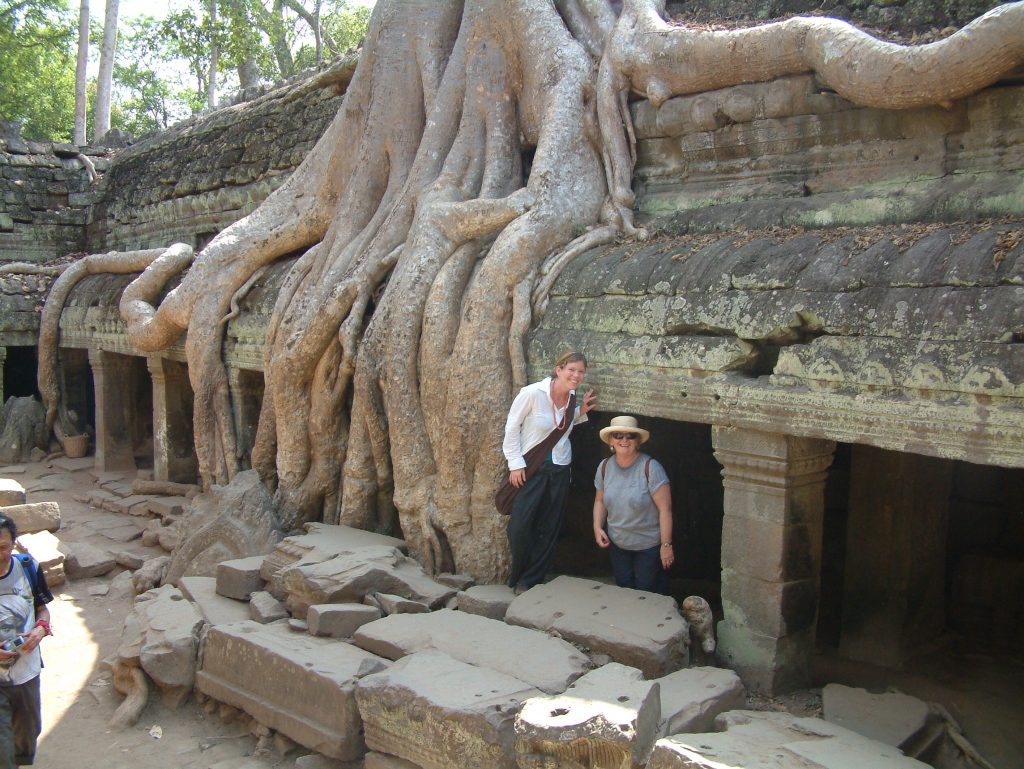Cambodia 1999
Introduction
I wrote this after our first trip. It gives some impressions of the country fairlr soon after it was opened up from Khmer Rouge control. The city, the countryside and Angkor had very few visitors at that time.
We started in Phnom Penh where the paranoia was thick on the ground from the moment we stepped off the aircraft, fair enough, we must have brought some of it with us, like those extra pieces of hand-luggage you always seem to acquire even though you had planned to “travel-light”. Even so it was a scary place. Those 3 million or so land mines might have something to do with it.
For me, the first journey from the airport to our respectable, if modest, hotel was alarming. The Highway Code of Cambodia by all appearances would fit onto the back of a postage stamp in Helvetica 12 point. Our driver would pull out into the main road (as often as not on the wrong side) and then start to look for traffic.
The only rule we could perceive at first was “the bigger the vehicle, the stronger its right of passage”. The most common form of transport was the “moto” or motorcycle, usually fairly small but capable of carrying a rider and 2 or 3 other people. The record was a family of 7, admittedly 2 of these were babes in arms but even so it was quite a squeeze. I particularly liked the sight of young ladies dressed impeccably, as for an evening ball, riding sidesaddle on these noisy contraptions through the busy, dusty streets of Phnom Penh.
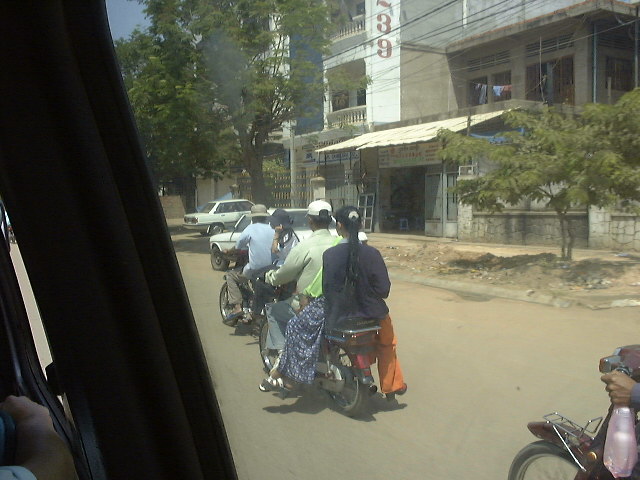
On that first day we were taken 15 Km south of the capital to Choeung Ek where perhaps 17,000 people were killed (mostly clubbed to death to save bullets), many of these were from the interrogation (torture) centre of Tuol Sleng in Phnom Penh.
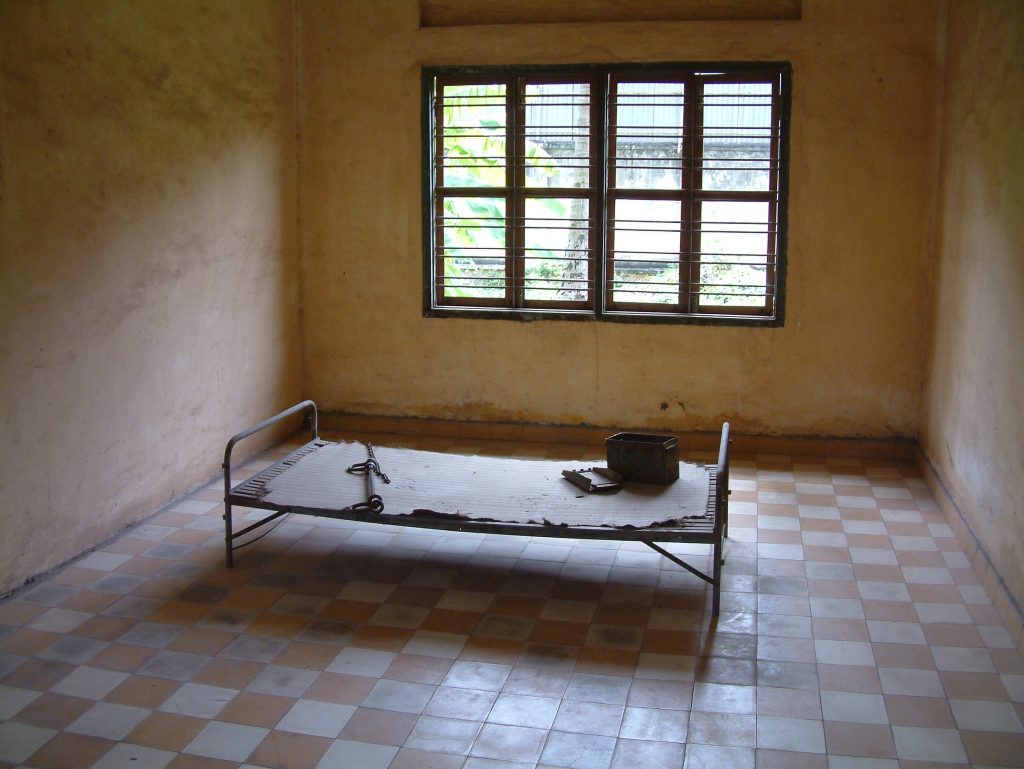
There was nothing too special about the site, could have been almost anywhere, except for the tower housing shelf upon shelf of victims skulls and the shallow pits all around, some with fragments of clothing and bone fragments. This ordinariness was perhaps the most sobering of aspect of the site for me. I’ve been to German concentration camps in Poland which are horrifying because of the detail – the never-ending columns of names and photographs, the masses of human hair, toothbrushes, artificial limbs, kids toys, eye glasses, suitcases which are from but a tiny fraction of the people put to death there. That made me stop and think how horrible the Nazi’s were but sort of like the Vikings in a way – that sort of remoteness, this made me realise that, for the people of Cambodia, this is not history made before I was born, but life for people in the present (I was in my late 20’s when all this took place).

Tuol Sleng itself was formerly a school, now a holocaust museum showing how the prisoners were kept and tortured. It is every bit as grisly and disturbing as you would expect. I don’t have any snaps of these places, however.
Tabitha
We were picked up at the airport by our hosts from Tabitha, an
organization devoted to the task of helping the poverty-stricken help
themselves through loans (as little as enough money to buy a some packs
of seeds) which they must pay back – thus increasing their own
self-respect. It is incredibly difficult for us to understand this
degree of poverty, the things we take for granted that these people
don’t have would fill the rest this page.
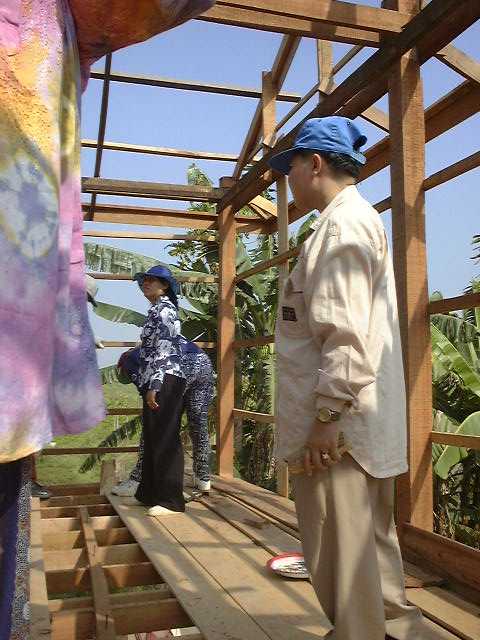
In the evening we met our Tabitha host and organiser Jan Ritskes at the Foreign Correspondents Club of Cambodia. This club had balconies overlooking the Tonle Sap River (which joins Indochina’s most famous river, the Mekong at Phnom Penh) and offers western foods such as Pizza and baked potatoes. In fact the food was excellent and Tiger beer (as in Singapore) was freely available on tap. Here we met some colleagues from the American School of Singapore and were given a brief, but pointed, run-down on things not to do in the city. Basically if you went to bed early and kept your head down everything should be alright. More paranoia.
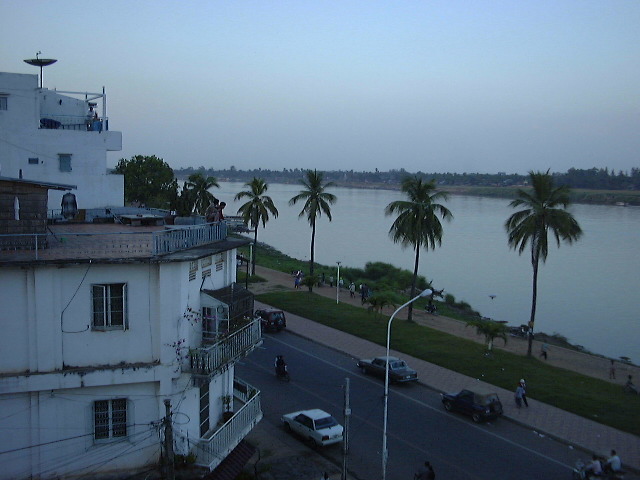
The next day was Monday and after an early morning meeting at Tabitha we travelled out to the countryside to help build our first house. The concrete foundations and supporting pillars were in place and we had to complete the floors walls and roof by nailing wooden boards into place (corrugated aluminium for the roof). I’m not exactly sure when we started although I believe we breakfasted at 7 am, anyway, the last nail went in at 6 pm so it was a long, long, hot day. Jan made us all dunk our heads in cold water at regular intervals which made me think of John the Baptist.
On the Tuesday we completed a smaller house in the slums of the capital. The first house was out in the country, very rural, they had extensive fields of fruit trees and vegetables with irrigation from the river. It was easy to believe that people (indeed ourselves) could be happy in such a setting and not miss our creature comforts all that much (!). However, you couldn’t possibly kid yourself that living and raising a family in the slums of Phnom Penh would be a romantic adventure of any kind. The family we built for had the clothes they stood up in and that was about it. The average life expectancy in these slums was about 35 and the infant mortality rate was 50%.
Angkor Wat
On Wednesday morning we took a local flight up to Siem Reap which is at the far end of Lake Tonle Sap from Phnom Penh (look it up on Encarta if you don’t believe me). We were met at the airport by Annie who works for Tabitha in the area and a local minibus driver called Seng (hope I spelt it right).
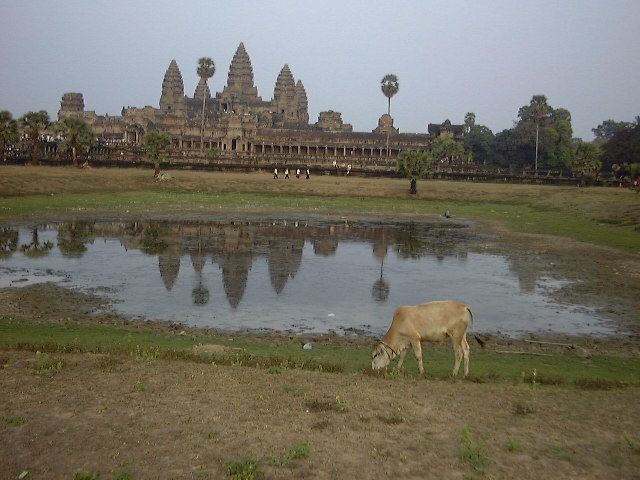
Both these people were wonderful hosts over the next three days and gave us every bit of help that they could to make our stay pleasant and interesting. the hotel at Siem Reap (the Goldianna) was new and well-equipped. Siem Reap is a very pleasant country town and is the gateway to the ruins of the Khmer Kingdom at Angkor inhabited between 802 and 1431 (give or take a year or two).
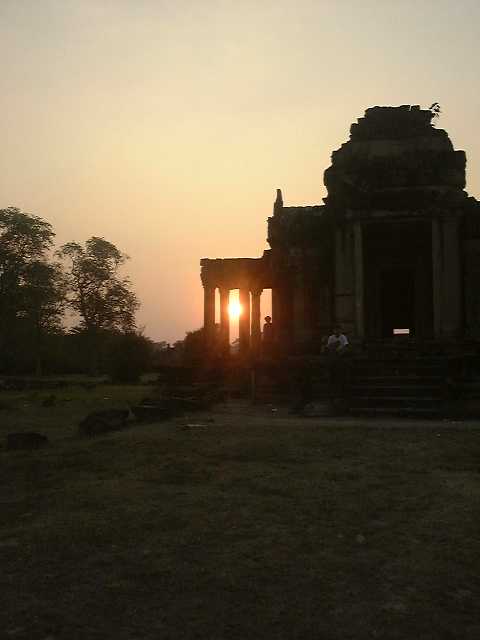
Nobody is quite sure why this great city was built here it seems, but it is known that this great empire depended upon the Tonle Sap Lake as a source of water for irrigation of rice paddies and for fish. Food was in surplus and this made the empire rich. The lake is unusual in that it occupies a vastly different area in the dry and monsoon season. During the monsoon it fills to the brim and then, when the rain stops, it shrinks to a fraction of its original size, fish are concentrated in the water (as much as 10 tons of fish per sq km of lake water) which makes them relatively easy to catch. Indeed, some fish get caught in the vegetation as the waters recede and can simply be picked up without any nets at all!
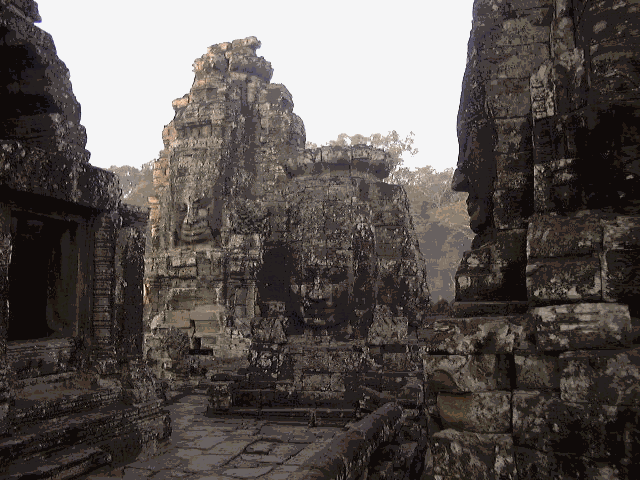
Some of the party (including Hania and I) got up at 5:30 am to see the sunrise over the Bayon (above).
What’s left for us to see are a series of truly spectacular ruins of which the most famous are Angkor Wat itself. the building is huge and surrounded by a moat which is, perhaps, the width of the Thames at Richmond and, in my estimation, 2-3 kilometres on a side – all man made needless to say. The three main towers at Angkor along with many courtyards and other buildings still stand are easily the most impressive archaeological remains I have ever seen. Nearby is the city of Angkor Thom (translated as Great City) which is a walled city of 9 sq km and estimated to have held a population of 100,000 people.
This is a magically creepy place (especially by early morning light) of 54 towers, each of which has four enigmatically smiling faces carved upon it – it has to be seen to be believed. We watched the light grow upon its walls and the monks came to tidy up the shrines and get ready for the pilgrims of the day to present incense sticks at the Buddhist shrines and make their devotions. That day we also saw the ruins of the city and several temples including one (Ta Prohm) which is largely overgrown by giant Banyan and other jungle trees.
